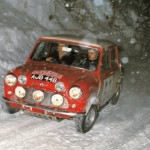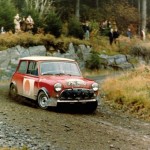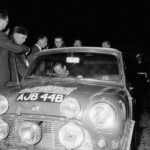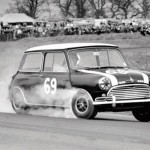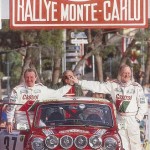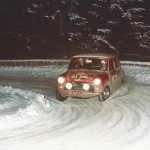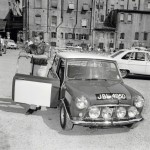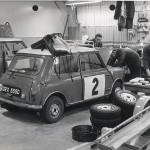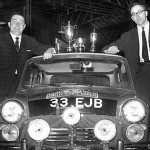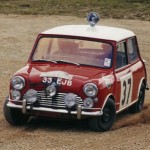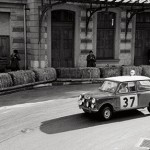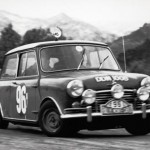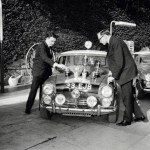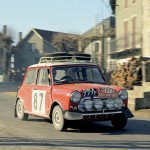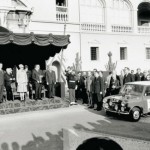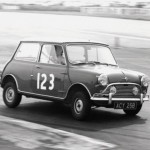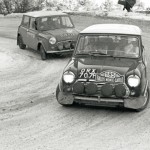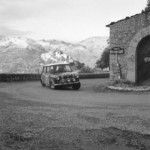Happy Birthday, Little Champion: Mini Cooper 50th Anniversary
One cause for good cheer in 2011 is the 50th anniversary of the Mini-Cooper. Be they original Austin or Morris, reconstituted Rover or even overblown BMW machines, few cars have brought such panache to motor sport or, for that matter, the supermarket car park.
At the Mini’s launch in 1959 the celebrated racer and journalist Paul Frere discovered that the basic car possessed astonishing dynamic abilities. Even with a thunderous 34bhp from its 848cc engine, Frere found that the Mini could generate higher cornering forces than contemporary Formula 1 machines – and set the wheels in motion for bigger things.
All this is hardly surprising when you think that the Mini’s creator, Alec Issigonis, is right up there in the pantheon of great designers alongside Ferdinand Porsche, Colin Chapman and Gordon Murray. A devout minimalist, like his fellow legends, the dynamic excellence of Issigonis designs stemmed from his pre-war experimentation with lightweight racing cars.
His humble Morris Minor looked like perfectly inoffensive transport for village vicars, but was a finely-balanced machine beloved by drivers such as Stirling Moss, Jack Brabham and Bruce McLaren when getting from A to B. Next to the understated Minor, the Mini was a firecracker – and once John Cooper experienced its remarkable agility an idea was born.
Issigonis was sceptical to begin with, fearing that nobody would want to buy a souped-up shopping car. His caution was well-founded, as in its first few years very few people wanted to buy the Mini at all – it was over-engineered, under-priced and selling poorly. Cooper was convinced, however, and all the more so when he thought of putting it into competition.
With all of 55bhp from its long-stroke 997cc engine, disk brakes, SU carbs and a racer’s choice of gear ratios the Cooper transformed the Mini – albeit not yet into a winner. It was the arrival of the new, young head of the British Motor Corporation’s competition department, Stuart Turner, which galvanized John Cooper’s plaything into a racing and rally star.
Under the eagle eye of Turner, the Mini-Cooper gained a 1071cc engine in time for the 1963 Tour de France, when Paddy Hopkirk and his new car – 33 EJB – enthralled a huge French TV audience with coverage of his battle against the mighty Ford Falcons to claim third overall. By the time they crossed the line, Frenchmen were heading to their local BMC dealers in droves, leading a surge in sales worldwide, while bigger things were ahead for Hopkirk and 33 EJB.
The 1964 Monte Carlo Rally was Turner’s masterclass. With his squad of flying Finns, Stirling’s little sister Pat Moss and the ebullient Hopkirk, there was real strength and depth. Turner also had the BBC on board, with former fighter pilot and much-loved presenter Raymond Baxter driving a standard car, reporting both his and the team’s progress live throughout the event. Hopkirk and 33 EJB duly won – and the rest of the Mini-Cooper story began.
Four victories on the road in Monte Carlo crowned a career which brought victories in the RAC Rally, Coupe des Alpes and in touring car racing around the world. With a choice of four engines to fit any kind of regulations and disciplines the Mini-Cooper was ubiquitously competitive, the star of the show and driving a huge boost in Mini sales.
Although the Mini-Cooper was becoming uncompetitive by 1968, it simply refused to die. Not when it was replaced on the production line by the 1275GT in the Seventies. Not throughout the neon-hued consumerism of the Eighties. Eventually Cooper pastiches were brought out – ‘limited edition’ versions of the bog standard car in two-tone paint – but what people wanted was a real Cooper.
Sure enough in 1990 a warmed-up ‘Cooper RSP’ appeared, leading to the reinstatement of Mini Coopers as top-of-the-range retro chic. They were chintzy where their forebears had been Spartan, but they were Coopers nonetheless.
Tellingly the last of all the 5,387,862 Minis to be built rolled off the line as a Cooper on October 4 2000. Less than a year later, however, BMW’s own über-kitsch replacement, the MINI, rolled out to a fanfare and was headed by a new range of Cooper models.
In 2011 MINI returns to front-line competition in the WRC with the gargantuan 4×4 Countryman model, which one enterprising Dutch motor magazine has proven will fit a 1961 Cooper inside. New BMW MINI is everything that Issigonis would hate – impractical and showy – but it’s a runaway success. With its two-tone touchy-feelyness the Cooper remains king as an iPhone on wheels.
It’s probably the best thing that could be hoped for 50 years after the Mini-Cooper burst into the world. We may as well be on another planet but let us raise a glass to that little gem of 1961: happy birthday, you little champion.
by Nick Garton

